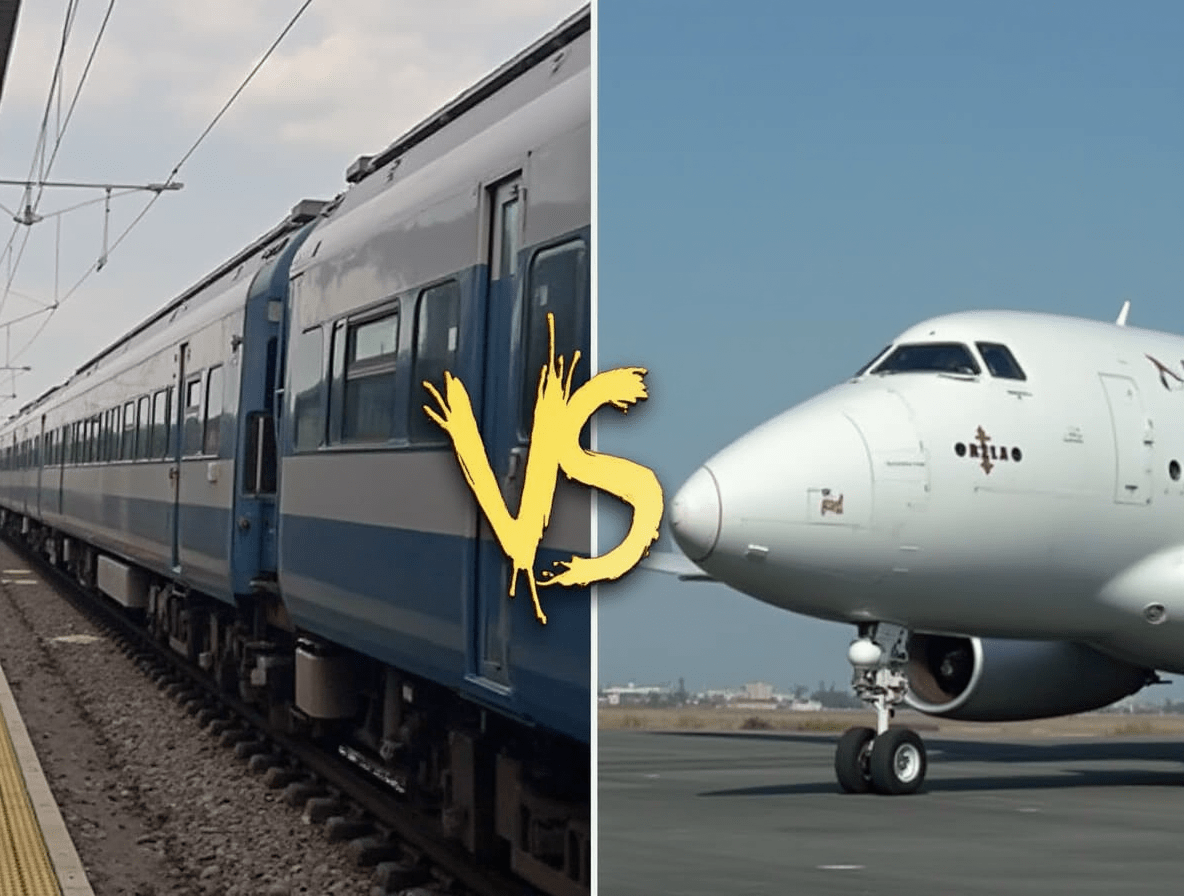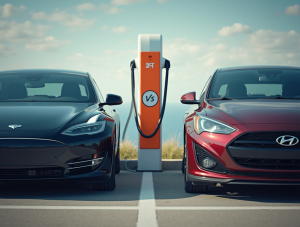
The Modern Transportation Dilemma
Did you know that for journeys under 500 miles, the total travel time difference between trains and planes can be as little as 30 minutes? Yet according to transportation surveys, 78% of travelers automatically choose flights for medium-distance journeys without comparing alternatives. This habit could be costing both time and money.
As sustainable travel concerns rise and airport experiences become increasingly stressful, many travelers are reconsidering their transportation choices. This comprehensive analysis examines how trains and planes compare in 2025, helping you make smarter decisions for your next trip based on true efficiency metrics rather than assumptions.
Understanding Travel Efficiency
What “Efficiency” Actually Means in Transportation
Before diving into the comparison, let’s clarify what constitutes “efficiency” in travel:
Key Efficiency Metrics:
- Time efficiency: Door-to-door travel time vs. scheduled duration
- Energy efficiency: Fuel consumption per passenger-mile
- Cost efficiency: Total expenses including hidden costs
- Space efficiency: Passenger capacity vs. infrastructure requirements
- Productivity efficiency: Usable time during journey
- Environmental efficiency: Emissions and ecological impact per passenger
Train vs Plane: The Complete Efficiency Analysis
Time Efficiency Comparison
Planes:
- Average cruising speed: 550-580 mph
- Terminal procedures time: 2-3 hours (check-in, security, boarding, deplaning, baggage)
- Airport location penalty: Typically 30-45 minutes from city centers
- Weather delay probability: 11% of flights experience delays >30 minutes
- Door-to-door time formula: Flight time + 3.5 hours (average)
Trains:
- Average high-speed rail cruising speed: 125-220 mph
- Average conventional rail cruising speed: 50-80 mph
- Terminal procedures time: 15-30 minutes (boarding, ticketing)
- Station location advantage: Typically in city centers
- Weather delay probability: 5% of trains experience delays >30 minutes
- Door-to-door time formula: Train time + 1 hour (average)
Real-World Time Comparison: For a 300-mile journey between city centers:
- Plane theoretical time: 36 minutes flight time
- Plane actual time: 4 hours 6 minutes door-to-door
- High-speed train theoretical time: 1 hour 30 minutes
- High-speed train actual time: 2 hours 30 minutes door-to-door
Distance-Based Time Efficiency Analysis:
| Distance Range | Average Door-to-Door Time | ||
|---|---|---|---|
| Plane | High-Speed Rail | Conventional Rail | |
| 0-150 miles | 3h 15min | 2h 00min | 3h 30min |
| 150-300 miles | 4h 00min | 2h 45min | 5h 15min |
| 300-500 miles | 4h 30min | 3h 30min | 7h 45min |
| 500-750 miles | 5h 15min | 5h 00min | 11h 30min |
| 750+ miles | 5h 45min+ | 7h 00min+ | 15h 00min+ |
Analysis: For distances under 300 miles, high-speed trains consistently deliver better door-to-door times than flying. Between 300-500 miles, the advantage remains with trains but narrows significantly. Beyond 500 miles, planes generally become more time-efficient, with the advantage increasing with distance. Conventional rail remains competitive only for short journeys under 150 miles.
Energy Efficiency Comparison
Planes:
- Average fuel efficiency: 45-55 passenger-miles per gallon
- Energy usage: 2,100-2,500 BTU per passenger-mile
- Load factor (occupancy rate): 85% average
- Fuel type: Aviation kerosene (non-renewable)
- Energy efficiency trend: Improving ~1.5% annually
Trains:
- High-speed rail energy efficiency: 80-120 passenger-miles per gallon equivalent
- Conventional rail energy efficiency: 65-95 passenger-miles per gallon equivalent
- Energy usage: 1,200-1,700 BTU per passenger-mile
- Load factor (occupancy rate): 65% average
- Power source: 42% electric (varies greatly by country), 58% diesel
- Energy efficiency trend: Improving ~1% annually
Energy Consumption Comparison: For a 300-mile journey per passenger:
- Plane: 690,000 BTU energy consumption
- High-speed train: 420,000 BTU energy consumption
- Conventional train: 480,000 BTU energy consumption
Analysis: Trains demonstrate 35-45% greater energy efficiency than planes on a per-passenger basis, with high-speed rail showing the best performance despite higher speeds. This efficiency gap widens further on routes with high train occupancy rates and narrows on routes where trains run with more empty seats. The renewable energy proportion of train travel continues to increase as more rail networks electrify and power sources shift to renewables.
Environmental Impact Efficiency
Planes:
- CO₂ emissions: 230-250 grams per passenger-mile
- Additional warming effects: High-altitude emissions have 2-4x greater climate impact
- Noise pollution: 70-80+ decibels in communities near airports
- Land use impact: Concentrated at airports (smaller overall footprint)
- Total carbon footprint: 300-500 kg CO₂e for a 300-mile journey
Trains:
- High-speed rail CO₂ emissions: 30-70 grams per passenger-mile (varies by power source)
- Conventional rail CO₂ emissions: 80-120 grams per passenger-mile
- No high-altitude emissions multiplier effect
- Noise pollution: 60-75 decibels along rail corridors
- Land use impact: Distributed along entire route
- Total carbon footprint: 40-110 kg CO₂e for a 300-mile journey
Emissions Reduction Potential: Shifting from air to rail travel reduces emissions by:
- 70-85% when shifting to electrified high-speed rail
- 45-65% when shifting to conventional rail
- Potential annual savings: 1.8 metric tons CO₂e for a commuter making bi-weekly 300-mile trips
Analysis: From an environmental perspective, trains demonstrate clear superiority with 3-7x lower carbon emissions than equivalent plane journeys. The advantage becomes even more pronounced when considering the high-altitude effects of aviation emissions, which some climate models suggest double or triple their effective climate impact. Electric trains in regions with clean energy grids can reduce this gap even further.
Cost Efficiency Comparison
Planes:
- Average base fare: $0.13-0.18 per mile
- Hidden costs: Baggage fees, seat selection, priority boarding
- Secondary costs: Airport transportation ($25-60 round trip average)
- Time value cost: Higher for productive professionals
- Total average cost: $180-310 for a 300-mile journey
Trains:
- High-speed rail average fare: $0.20-0.35 per mile
- Conventional rail average fare: $0.15-0.25 per mile
- Hidden costs: Minimal (typically just seat upgrades)
- Secondary costs: Urban transit to station ($5-15 round trip average)
- Time value cost: Lower due to productive travel time
- Total average cost: $150-270 for a 300-mile high-speed journey
Cost Analysis by Distance:
| Distance Range | Average Total Cost | ||
|---|---|---|---|
| Plane | High-Speed Rail | Conventional Rail | |
| 0-150 miles | $140-220 | $80-130 | $60-90 |
| 150-300 miles | $180-310 | $150-270 | $90-180 |
| 300-500 miles | $220-370 | $200-400 | $140-250 |
| 500-750 miles | $280-450 | $300-550 | $180-320 |
| 750+ miles | $350+ | $400+ | $250+ |
Analysis: For short and medium distances, trains typically offer better cost efficiency, particularly when accounting for airport transportation costs and baggage fees. The crossover point where planes become more cost-effective occurs around 400-500 miles for high-speed rail and 300 miles for conventional rail. Business travelers who value productive time may find trains more cost-efficient up to longer distances due to the ability to work effectively throughout the journey.
Productivity Efficiency
Planes:
- Usable working time: 40-60% of flight time
- Internet connectivity: Available on 78% of flights, often paid and unreliable
- Space per passenger: 17-31 inches of legroom
- Stable working environment: Moderate (turbulence, space constraints)
- Power availability: Available at 62% of seats
- Productivity score (business traveler survey): 5.7/10
Trains:
- Usable working time: 85-95% of journey time
- Internet connectivity: Available on 86% of routes, often free and more reliable
- Space per passenger: 31-42 inches of legroom
- Stable working environment: High (smooth ride, more space)
- Power availability: Available at 89% of seats
- Productivity score (business traveler survey): 8.2/10
Productivity Analysis: For a 3-hour travel duration:
- Plane productive time: ~75 minutes
- Train productive time: ~160 minutes
- Productivity differential: 113% more productive time on trains
Analysis: Trains offer substantially higher productivity efficiency, with nearly twice the usable working time compared to air travel when accounting for all factors. This advantage stems from multiple factors: earlier boarding with immediate seating, fewer interruptions, more space, better table arrangements, reduced security procedures, and typically more reliable connectivity. For business travelers, this productivity advantage can offset a significant portion of the time difference on routes where planes are nominally faster.
Special Considerations for Different Routes
Urban Center-to-Center Travel
Planes:
- Additional time: 45-90 minutes airport transfers each way
- Urban access options: Limited (typically taxi, limited public transit)
- Last mile options: Few, often expensive
- Schedule flexibility: Lower (fewer daily departures)
Trains:
- Additional time: 10-20 minutes station transfers each way
- Urban access options: Extensive (integrated with local transit)
- Last mile options: Many, typically affordable
- Schedule flexibility: Higher (more frequent departures)
Analysis: For travel between urban centers specifically, trains offer a pronounced advantage even at distances where planes might otherwise be faster. The central location of train stations eliminates the significant time and cost penalties associated with airports. For domestic business travelers making day trips, this advantage can mean the difference between needing overnight accommodation or not.
Rural and Regional Connectivity
Planes:
- Regional airport coverage: 5,080 public airports in the U.S.
- Small community accessibility: Often requires connections through hubs
- Last mile logistics: Difficult without car rental
- Schedule reliability: More weather-dependent
Trains:
- Station coverage: 2,230 Amtrak stations in the U.S.
- Small community accessibility: Limited to communities along rail corridors
- Last mile logistics: Often requires additional transportation
- Schedule reliability: More consistent in varied conditions
Analysis: The efficiency comparison in rural and regional settings varies dramatically by geography. In regions with dense rail networks (Europe, Japan, parts of China), trains efficiently connect smaller communities. In countries with sparse rail infrastructure (U.S., Canada, Australia), planes often provide the only practical connections to remote areas despite their inefficiencies.
Making Your Choice: Train or Plane?
Choose Trains When:
- Your journey is under 300 miles (or 500 miles with high-speed rail)
- You’re traveling between city centers
- You need to work productively during transit
- Environmental impact is a priority
- You prefer to avoid security procedures and airport stress
- Weather conditions might disrupt flights
- You’re carrying substantial luggage
Choose Planes When:
- Your journey exceeds 500 miles
- High-speed rail isn’t available on your route
- You’re not traveling between major city centers
- Absolute door-to-door time is the critical factor
- Schedule flexibility is limited and you need specific timing
- You’re connecting to international flights
- You’re traveling to remote locations
The Hybrid Approach: Optimizing Multi-Modal Travel
For maximum efficiency, experienced travelers increasingly use combined approaches:
The Rail-Fly Strategy:
- Take trains for the “spokes” of your journey (getting to major hubs)
- Use planes for the “long haul” segments
- Example: Train from suburban location to major airport, fly long-distance, then use local train at destination
The Hub-Optimization Approach:
- Calculate the true efficiency crossover point for your specific journey
- Factor in your personal productivity value and environmental priorities
- Use digital planning tools that incorporate real multi-modal comparisons
Frequently Asked Questions
At what distance does flying become more time-efficient than taking the train?
The crossover point varies significantly by region and available infrastructure. With high-speed rail, trains typically maintain time efficiency advantages up to 300-500 miles. With conventional rail, this drops to 150-200 miles. In regions with extensive security at airports (like the U.S.), the train advantage extends further due to additional processing time at airports.
How does reliability compare between trains and planes?
Trains demonstrate superior on-time performance in most regions. In the U.S., Amtrak’s overall on-time performance averages 75%, while domestic flights average 82%. However, in severe weather, trains maintain much higher reliability. During winter storms, train cancellation rates average 5-7% compared to 22-35% for regional flights.
Are trains always more environmentally friendly than planes?
In most scenarios, yes. Even diesel-powered trains emit 60-70% less carbon than planes per passenger-mile. Electric trains powered by renewable energy sources can reduce emissions by up to 95% compared to flying. The only scenarios where planes might have comparable environmental impact are when comparing nearly-empty trains to fully-loaded modern aircraft.
How does the cost comparison change for last-minute bookings?
Train pricing tends to be more stable approaching departure dates, while airfares increase dramatically. For bookings made within 72 hours of departure, train tickets average a 15-30% premium over advance purchases, while flight prices can surge by 200-400%. This makes trains particularly cost-efficient for spontaneous travel or emergency trips.
Which mode of transportation is expanding more rapidly?
High-speed rail is currently expanding faster than air travel infrastructure in most developed regions. China has added over 25,000 miles of high-speed rail in the past decade, while the EU has committed to doubling its high-speed network by 2030. In contrast, major airport expansion projects face increasing regulatory hurdles and community opposition in many regions.














